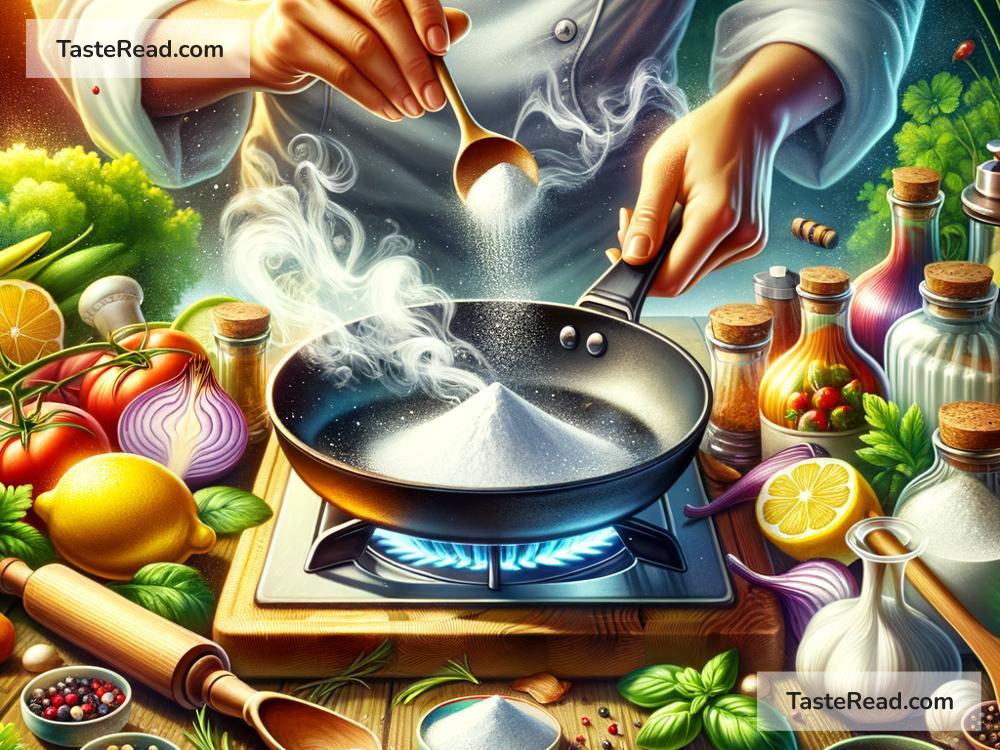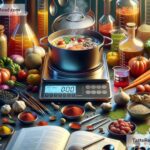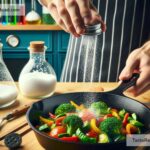The Science of Cooking with Chemical Heroism: Techniques and Tips
Cooking often feels like magic, transforming raw ingredients into delicious meals. But behind that magic is science—chemical reactions and physical processes that make our food taste delicious, look appetizing, and smell amazing. When you understand the science of cooking, you become a “chemical hero,” someone who uses knowledge and creativity to achieve culinary perfection! In this blog, we’ll explore the fascinating science of cooking and share simple techniques and tips to help you unleash your inner chemical hero.
Cooking is Science
Cooking involves chemistry, physics, and biology. When food is heated, cooled, mixed, chopped, or seasoned, molecules are changing and reacting. For example, proteins break apart (in a process called denaturation), sugars caramelize to create sweetness, and fats melt to add richness. These chemical reactions are responsible for the flavors, textures, and aromas that make food enjoyable.
Understanding these processes can elevate your cooking. When you know why something happens, you can control the outcome, troubleshoot problems, and experiment confidently.
The Science Behind Common Techniques
- The Maillard Reaction: A Flavor Revolution
Have you noticed how meat browns when cooked, or how toast smells amazing after popping out of the toaster? That’s the Maillard reaction! It occurs when heat interacts with amino acids (from proteins) and sugars, creating hundreds of new flavor compounds. This is why grilled steak, roasted vegetables, and baked goods taste so complex and delicious.
Tip: To maximize the Maillard reaction, dry your food before adding it to a hot pan. Moisture slows down browning. Pat your meat with a paper towel, and don’t overcrowd the pan, as this traps steam.
- Caramelization: Sweet Success
Caramelization happens when sugars are heated to high temperatures, breaking down and creating complex flavors. This process adds sweetness and depth to recipes like desserts, caramel sauces, and roasted vegetables.
Tip: Use moderate heat to prevent burning while caramelizing sugar or vegetables. Stir occasionally and watch closely—caramelization happens fast!
- Emulsification: Blending Fat and Water
Oil and water usually don’t mix—unless you add an emulsifier like mustard, egg yolks, or mayonnaise. Emulsifiers help bind fat and water, creating creamy sauces like vinaigrette, hollandaise, or aioli.
Tip: Make emulsions slowly. Add oil drop by drop while whisking vigorously until the mixture thickens. This prevents splitting and ensures a smooth texture.
- Denaturation: Tenderizing Proteins
Heating, marinating, or salting protein changes its structure—a process called denaturation. This softens meat, intensifies flavors, and makes eggs firm.
Tip: For tender and juicy meat, marinate or brine it before cooking. Acid (like lemon juice) or salt causes protein to denature, locking in moisture.
- Starch Gelatinization: Perfect Pasta and Rice
Starch in pasta, rice, or flour absorbs water and swells when heated, turning into a gel-like structure. This process (called starch gelatinization) gives pasta its firm texture and bread its fluffiness.
Tip: For perfectly cooked pasta, boil it in plenty of salted water. The salt enhances flavor while maintaining texture.
Chemistry in Baking
Baking is one of the most scientific cooking methods. Each ingredient—flour, sugar, eggs, leavening agents—plays a specific role. For example, baking soda and baking powder create bubbles of carbon dioxide gas, helping cakes rise and become fluffy. Butter adds richness and flakiness, while eggs bind everything together.
Tip: Follow baking recipes closely, as small changes can dramatically affect the final outcome. Precise measurements and temperatures are critical for success.
How Temperature Transforms Food
Cooking temperatures matter. Heat causes molecules to move faster, break apart, or combine. Here are some examples of how temperature changes food:
- Low heat gently warms proteins without toughening them. Use this for eggs, fish, or custards.
- Medium heat develops flavors slowly, perfect for simmering soups and sauces.
- High heat creates browning and crispiness, ideal for searing meats or roasting vegetables.
Tip: Use a thermometer to monitor food temperatures. For example, chicken is safe to eat at 165°F (74°C), while medium-rare steak is cooked to 135°F (57°C). This ensures consistent and delicious results.
Experimentation: Your Heroic Power in the Kitchen
Cooking is an art, but experimenting with science can make it even more rewarding. Try new combinations, tweak recipes, and observe how ingredients behave. Here are some ideas to start:
- Add a pinch of salt to sweet desserts to enhance flavor contrast.
- Swap different oils to see how they affect flavor and texture.
- Test different cooking methods, like roasting versus steaming veggies, and compare the outcome.
Wrapping It Up
Cooking is a fascinating mix of science and creativity. With knowledge of chemical reactions like the Maillard reaction, caramelization, and denaturation, you can make better decisions in the kitchen. From creating crispy roasted potatoes to baking light and airy cakes, understanding these processes turns you into a culinary chemist.
So, the next time you tie on your apron, think of yourself as a chemical hero. Embrace the science, experiment boldly, and let your imagination guide you to delicious discoveries! Cooking isn’t just about following recipes—it’s about creating edible experiments full of flavor, texture, and joy.


